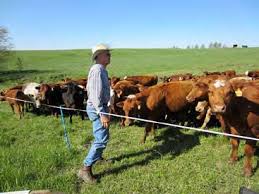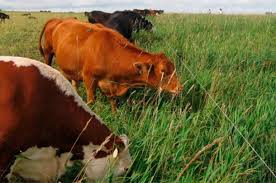Temporary pastures are pastures established with the intention of converting them into farmlands after a few years. The choice of pasture duration depends on the type of livestock enterprise the farmer aims to establish and the available resources.
Additionally, the number of animals on the farm influences the decision regarding how long the pastures will be used. However, it is important to select the right pasture species to avoid environmental damage.
Read Also: 14 Medicinal Health Benefits of Epimedium grandiflorum (Horny Goat Weed)
1. Definition and Purpose of Temporary Pastures
Temporary pastures are established as part of a rotational system, either to provide feed for livestock or for other purposes, such as controlling erosion, managing pests and diseases, or conserving moisture.
They can also serve as a source of nutrients, thus improving soil fertility. Both annual and perennial species can be used, but they must be easy to eradicate. Temporary pastures are highly productive because they are established on fertile soils and typically last between 3 to 5 years.
2. Establishment of Temporary Pastures on Farmland

Temporary pastures are established on fertile, relatively flat lands that are not rocky. Proper site preparation is crucial and includes ploughing, harrowing, leveling, and ridging. A sufficient quantity of seeds must be sourced from reliable suppliers before sowing.
The agronomic practices for establishing temporary pastures are similar to those used for field crops. However, prompt fertilization and weeding are especially important during the first year of establishment.
Read Also: Poultry Record Keeping and Performance Evaluation
3. Advantages and Disadvantages Of Establishing Temporary Pastures

Establishing temporary pastures offers the following advantages:
1. Integration of Livestock Production: Livestock production can be integrated into pastures for increased efficiency.
2. Reduced Chemical Use: Fewer chemicals are needed to control insects, pests, and diseases on the farm.
3. Improved Soil Fertility: Temporary pastures help improve soil fertility over time.
4. Easy Eradication: These pastures can be easily eradicated when they are no longer needed.
However, there are some disadvantages associated with establishing temporary pastures:
1. Limited Purpose Fulfillment: Temporary pastures may not always serve the intended purpose.
2. Additional Costs: Farmers may incur extra expenses for purchasing fertilizers, especially for grass species.
3. Vulnerability to Overgrazing: These pastures may not tolerate heavy defoliation or overgrazing by livestock.
This article outlines the concept of temporary pastures, their establishment procedures, and their role in livestock systems. It also discusses the advantages and disadvantages associated with the establishment of these pastures, particularly in specialized livestock systems aimed at profit gain. Ultimately, temporary pastures are established on fertile lands to improve productivity.
Do you have any questions, suggestions, or contributions? If so, please feel free to use the comment box below to share your thoughts. We also encourage you to kindly share this information with others who might benefit from it. Since we can’t reach everyone at once, we truly appreciate your help in spreading the word. Thank you so much for your support and for sharing!

